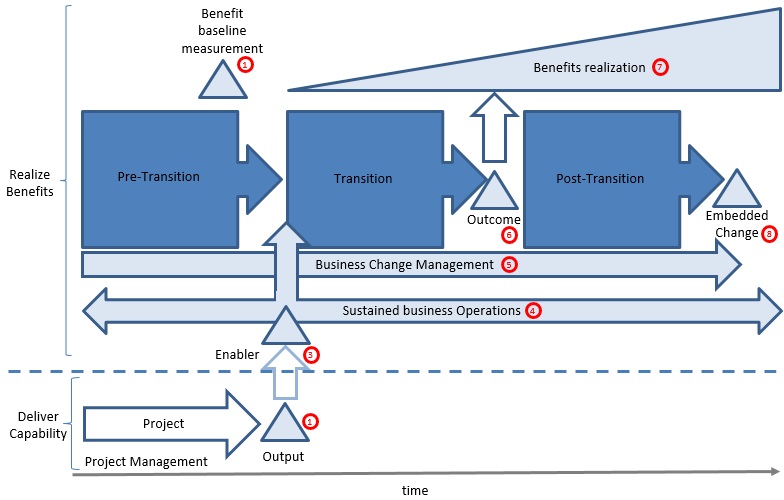The sample below comes in the managing successful programmes book. The diagram describes a simple example showing outputs, transition management and benefits realization.
- Benefit baseline measurement, done during the development of the blueprint to understand how we go from the situation “as-is” to the desired state “to-be”.
- Output, the project has been delivered.
- which is received by the business unit as Enabler,
- to take into its operations (Sustained business operations).
- Business change management, changes may be required for this single enabler to embed it into operations.
- Operational outcome, is the achievement itself at operational/business level.
- Benefits realization, must be tracked by the Business Change Manager (BCM).
- Embedded change, a change that sticks.
The cycle is simple, and so much times is not understood by people around a program. I recently have seen how the role of Business Change Manager was lost after a program concluded, and there were no follow-up of the business benefits after that: a completely waste of time/money/effort for an organization who invested a lot on such program.
